2024 Royal Enfield Himalayan vs Triumph Scrambler 400X: Which is Better for Everyday Adventure?
Can't decide between the Triumph Scrambler 400X and the new Royal Enfield Himalayan? Don't worry, our man Shivank is in the same boat and he's here to help you and himself make the right decision.

In July 2023, I was in Pune for the launch of the Triumph Speed 400 and Scrambler 400 X and witnessed both motorcycles in the flesh. Two hours later, on my way back to the hotel, I had already booked the Scrambler 400 X without even riding it. Now, I don’t usually make impulsive decisions like that, for I am someone who thinks long and hard and spends hours doing research before making any purchase. This time, however, was different. What can I say, it was a classic case of love at first sight.
The Scrambler 400X had me captivated from the moment I laid my eyes on it. I was eagerly anticipating the delivery of my motorcycle, which would happen in October 2023, for that’s when the Scrambler 400X was to hit showroom floors in the country. Little did I know that a surprising plot twist awaited me.
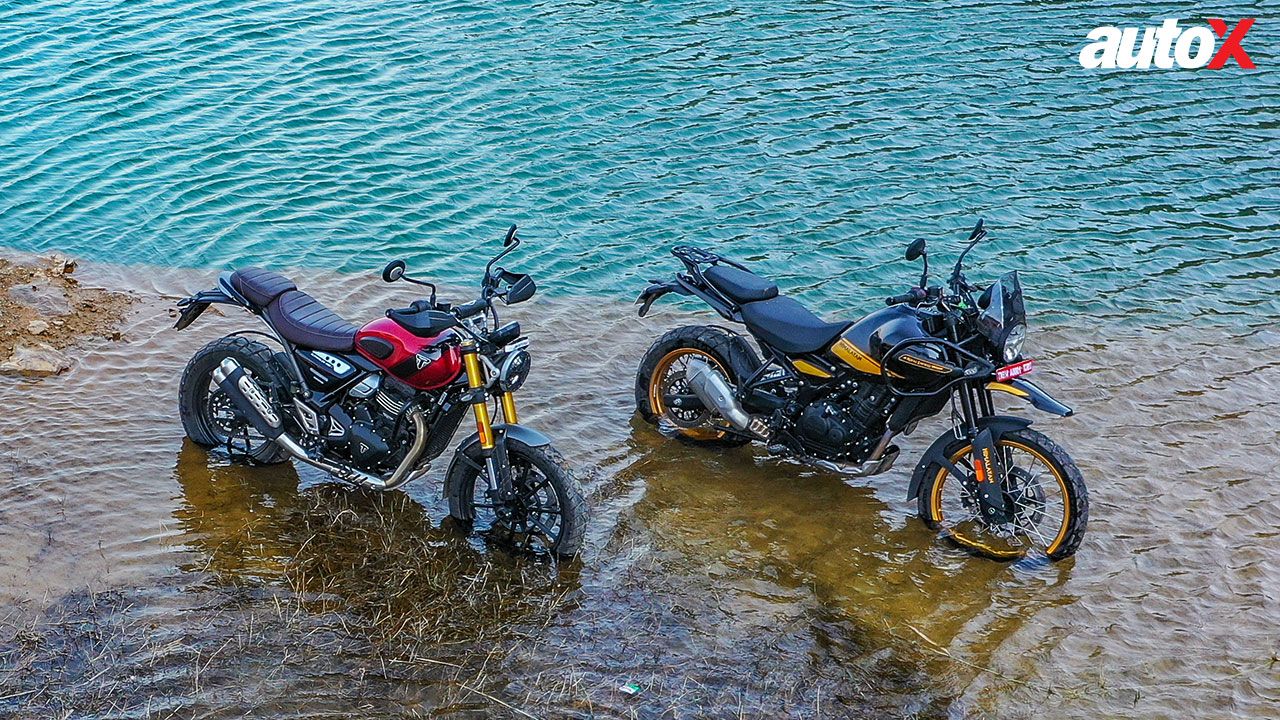
October was also the month Royal Enfield decided to throw a spanner in the works by bringing out the all-new Himalayan. And, boy, has it created some confusion since! I missed the first ride of the Himalayan, but virtually everyone who attended the press ride event unanimously claimed that the new Himalayan was mind-blowing. More confusion ensued. And then when I finally got my hands on the new Himalayan during the MotoVerse in Goa, I could see what the fuss was all about. The new Himalayan turned out to be more impressive than I had imagined!
Despite being in love with the Scrambler 400X and anticipating the delivery, the capabilities of the Himalayan had me scratching my head day in and day out, resulting in my many sleepless nights. When I discussed this conundrum with folks in the office, I discovered that I wasn’t the only one sitting on the fence over this Scrambler vs Himalayan debate. Their suggestion – ride both bikes back-to-back and find out the answer once and for all. Consequently, we assembled both motorcycles, rode them on and off the road and lived with them for a couple of days to arrive at a definite conclusion.
Design: Looks Matter
First things first, the Scrambler 400X is a looker, and I would be lying if I said I booked the Scrambler 400X for any other reason – after all, it’s a spitting image of the classic Triumph Scrambler design. The proportions, petite dimensions, and high levels of fit-and-finish all make it stand out in the crowd. And even though it’s a smidgen smaller than, say, the Scrambler 900, many people often mistake it for the bigger one. Some of its key design highlights include a wide handlebar coupled with handguards, a headlamp grille, a 19-inch front wheel, a split-seat setup, and a twin-barrel exhaust. All of these give it an imposing and purposeful stance. It looks a bit of a hooligan for sure.
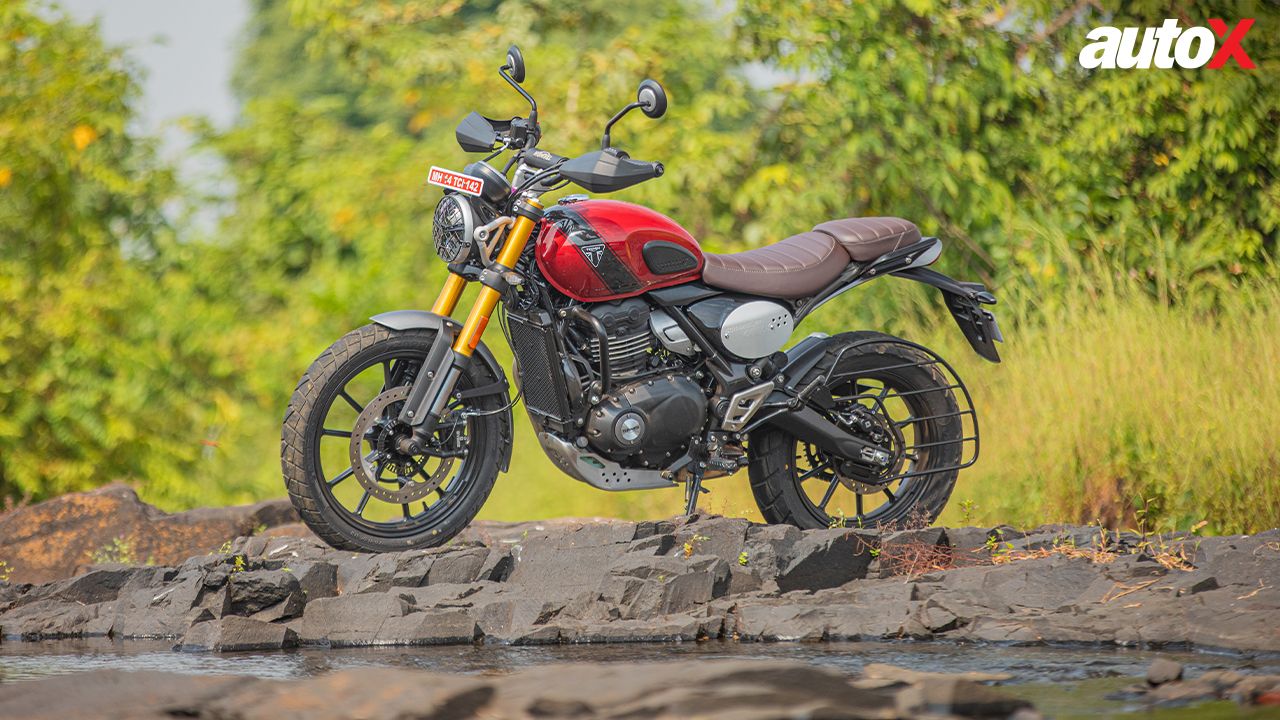
The Himalayan, in comparison, looks more serious and adventure-focused. Thanks to its 21-inch front wheel (spoked) and larger footprint, it looks much bigger and more imposing when parked alongside the 400X. What I love about the new Himalayan’s design is that, unlike its predecessor, it doesn’t look crude. It has some cool colour options, like the Hanle Black you see here, and it feels like a thoroughly modern motorcycle now, with all LED lighting and even a colour TFT display, which is much superior to the Triumph’s bare basic part analogue part digital instrumentation. The fit-and-finish levels have definitely improved, but the Triumph still has an edge over it in this department.
So, what’s my pick based on their aesthetic appeal alone? Well, I must say that even though the Himalayan is a great-looking motorcycle, my heart is still set on the Triumph from a design perspective. So, Triumph – 1, RE – 0 for now.
Also read: Triumph Scrambler 400X First Ride Review
Features & Ergonomics: Sizing ’em Up
In terms of standard features and equipment, the Himalayan gets the better of 400X. It doesn’t just have different riding modes and a bright colour display but also connected features and a stellar navigation system. Sure, the system does have some glitches, and you have to keep your phone unlocked all the time for the navigation system to function, but from what we know, RE has been steadily fixing these initial software glitches, and things are expected to get better in the coming months.
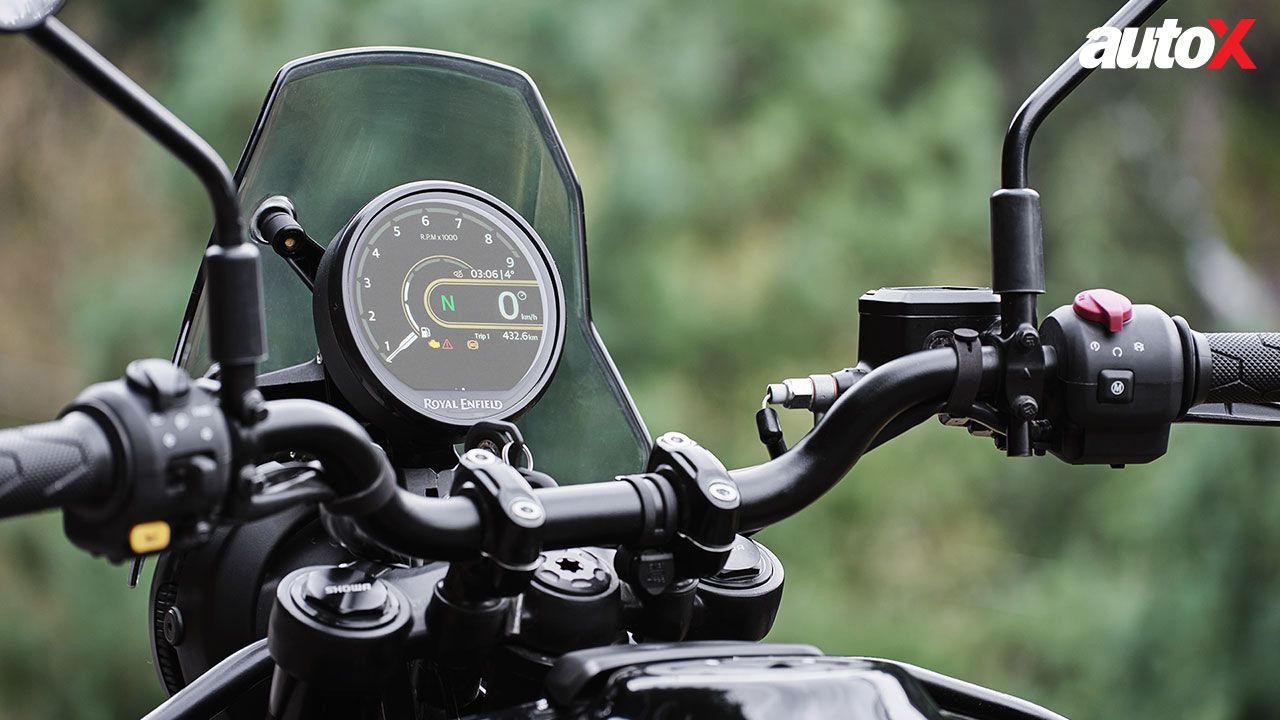
The Triumph, on the other hand, gets switchable traction control – missing in the Himalayan – and that’s about it. Not to mention, it’s a bit fidgety to use. That said, the LED headlamps of the Scrambler offer better illumination and are more powerful than the Himalayan’s. On the whole, though, I would still say the Himalayan offers more bang for your buck in the features department.
It’s much the same story in terms of ergonomics. For my 5’8” frame, the Himalayan felt natural and almost perfect in every way. The rider triangle is upright and feels spacious. Plus, the handlebars are placed perfectly – high and wide with good leverage – and it’s easy to flat-foot. Our test bike had the optional low-seat setup – the seat height in this case could be adjusted between 800 and 825mm, while in the standard setup, it’s between 825 and 845mm. The motorcycle tips the scales at 200kgs, but it’s surprisingly quite easy to manoeuvre even at low speeds. That said, it does feel a bit top-heavy and comes across as a much bigger motorcycle than its predecessor, so some riders may take some time getting used to it.
The Triumph may seem to be a more accommodating and accessible motorcycle, given its compact dimensions and relatively lighter weight (186kgs), but that’s not entirely the case. The seat, for instance, is quite tall at 835mm, and you will find the pegs fouling with your legs at a standstill or while wheeling the motorcycle at low speeds. Shorter riders will also find it a bit difficult to flat-foot. The rider’s triangle is spacious, and you sit comfortably in a bit forward-biased position. The handlebar is wide but not too high. Personally, though, I feel the Himalayan to be a better fit for my frame. The Himalayan allows you to sit ‘in’ the motorcycle, while the Scrambler makes you sit ‘on’ the motorcycle, so to speak. This is purely down to their different riding styles – the former is an ADV made for munching miles, while the latter is largely a naked motorcycle with light modifications for occasional off-road excursions.
So, the Himalayan leads in terms of features and ergonomics, bringing the current tally to Triumph – 1, RE – 1.
Engine Performance: Power Tussle
Now, let’s delve into the heart of the matter – the engines. Both these motorcycles feature liquid-cooled single-cylinder powerplants. The Himalayan’s unit – dubbed the Sherpa – displaces 452cc, while the Triumph is just shy of the 400cc mark at 398cc. However, when it comes to the power and torque figures, both the motorcycles are neck and neck – 40bhp & 40Nm for the Himalayan vs 40bhp and 38Nm for the 400X. That said, they go about delivering their horses in a very contrasting manner.
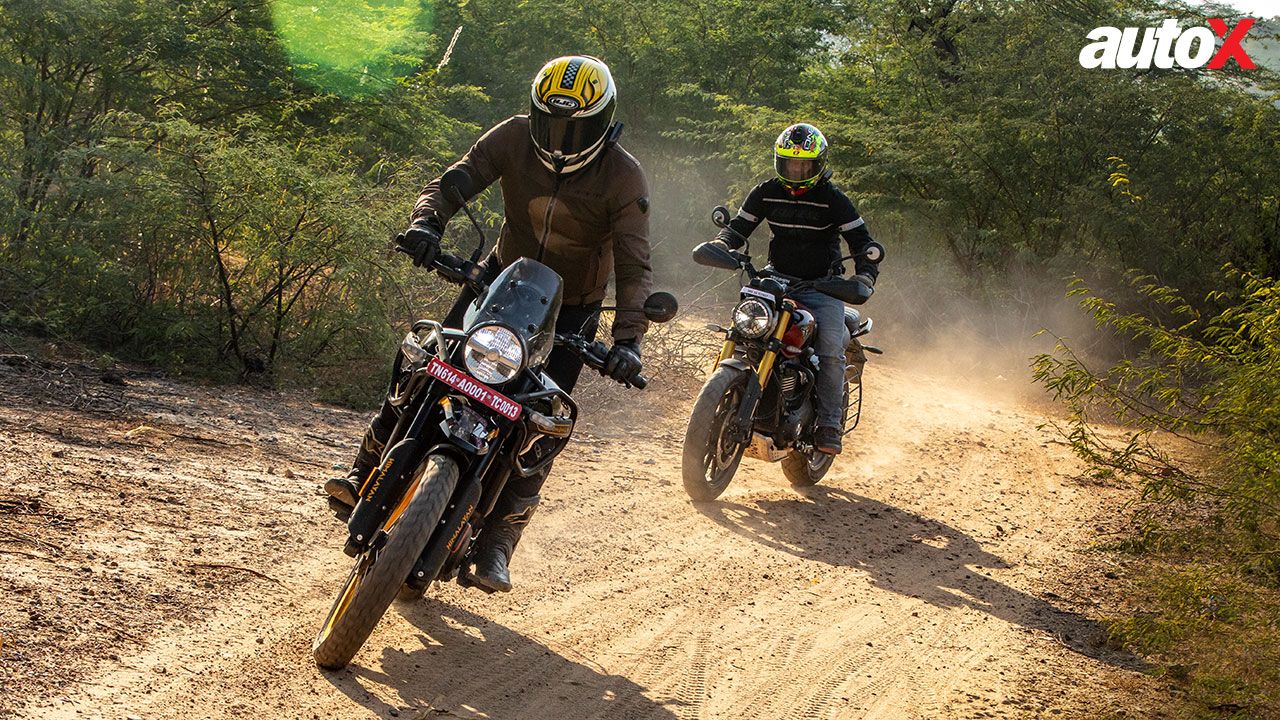
The 400X’s unit is all about peppy throttle response and bottom-end grunt. The torque flows thick from as low as 2,000rpm, and shorter gearing helps extract all the ponies from this single-cylinder. The engine has enough oomph throughout the rev band, and each twist of the right wrist results in a quick burst of acceleration. You will love this aspect when you’re riding within the close confines of the city. This motor also loves to be revved and has quite a strong top end. However, vibrations become quite evident between 5,000 – 7,000rpm, with the handlebar, tank, and footpegs buzzing like bees. The vibey nature of the engine is also quite evident during highway riding, and short gear ratios don’t help either. If you intend to do long-distance touring or cruising, this is not the right motorcycle of the two, as the engine always seems to be on a boil at triple-digit speeds.
There’s no such concern with the Himalayan if you spend most of your time on highways, which doesn’t necessarily mean touring. For instance, my commute includes 60% highway riding and 40% city riding, so even for me, the Himalayan’s motor’s calm and composed nature works better than the get-up-and-go Triumph. Sure, it also vibrates at mid-to-high rpm, but vibrations here somehow feel better damped. Having said that, the Himalayan’s low-end is relatively weaker than that of the Triumph, and you will find yourself slipping the clutch while navigating through traffic. But, once the motor revs past 3,000rpm, it starts to sing and dance, as a strong surge starts to build and continues all the way up to 8,000rpm – for a RE motorcycle, it’s a bit of a pleasant surprise. The gearing of the RE is very well-judged too – the in-gear acceleration is strong, making overtakes a brisk affair. Once you’re on the move, you won’t find yourself working the gearbox as often as you would with the Triumph. However, I must add that the gear-shift quality of the 400X is better than the Himalayan’s, for the latter feels vague at times.
Now, I find it impossible to pick a winner in this department, since both powertrains are potent in their own right. So, let’s call it a tie. This means the scores are even now: Triumph – 2, RE – 2.
Also read: Royal Enfield Himalayan Prices go up as Introductory Offer Ends
Ride & Handling: Make or Break
This will be the title decider, so let me cut to the chase, kill the suspense, and reveal that the Himalayan emerges as the champion in this department. Be it on the road or off-road, the RE feels more composed and better balanced than the Triumph. Now, allow me to explain this in detail.
The Himalayan’s new twin-spar chassis and Showa suspension – a 43mm front fork and a mono-shock at the rear – have made this motorcycle an absolute peach. There’s a newfound agility and composure that, quite honestly, shocked me – in a good way, obviously – given that it’s an RE. The suspension is so beautifully damped that it’s supple enough to gobble up all kinds of road imperfections while managing to remain firm and surefooted when pushed around a well-paved corner. It’s remarkable how balanced and nimble the Himalayan feels. What’s even better is that this stellar balance also continues during off-road excursions – the Himalayan feels rock steady when the going gets rocky, and the kind of confidence the front end inspires is commendable. Plus, the fact that it has more travel (200mm vs 150mm at both ends) and more ground clearance (230mm vs 195mm) is certainly more comforting for off-road junkies.
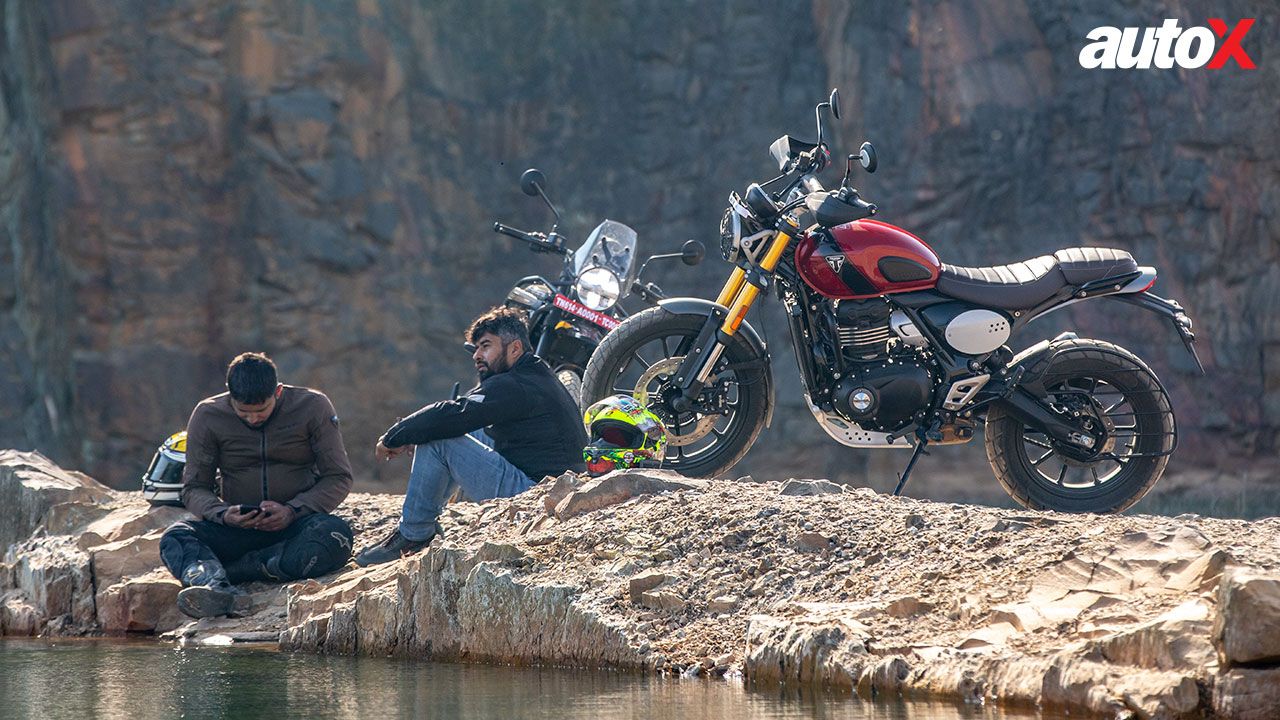
What truly blew my mind away, though, was how the Himalayan tackles everyday commute – for a 200kgs adventure motorcycle, it is surprisingly nimble and quite fun to ride in the city. And the only word that I would use to explain this is ‘balance’. In the ride and handling department, the Himalayan feels complete, regardless of the surface you ride it on.
In comparison, the Scrambler isn’t a shoddy handler either. In fact, in the city, it’s wieldier and more fun than the Himalayan, thanks to its short wheelbase. But this also makes it a one-trick pony. The suspension lacks the finesse of the Himalayan’s. It feels a bit soft and soggy and doesn’t feel as surefooted around corners. I also don’t like the brakes – they lack the initial bite and don’t inspire enough confidence – and for this reason alone, I found myself taking things at a relatively slower pace during the test.
Off-road, the 400X isn’t as good as the Himalayan, but, then, it’s not something that it’s intended to do. That said, it’s quite decent for light trail riding. The suspension has just about enough travel for small rocks and undulations, and it doesn’t shy away from tackling bad and bumpy roads. In fact, for city rides, the Scrambler is a better motorcycle – although, I must add that I enjoyed the Himalayan more even in the city.
Verdict
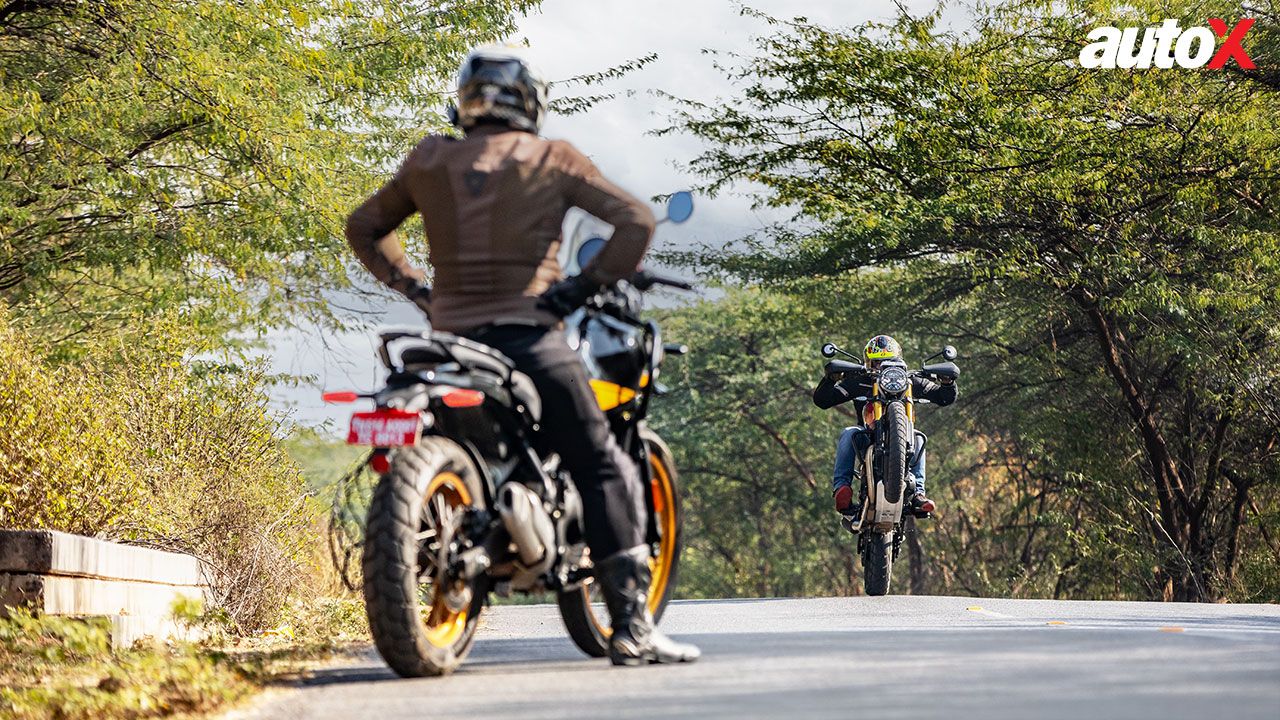
Picking a clear winner between these two was never going to be an easy affair. As much as I love the Scrambler 400X and am biased towards it, I can’t ignore the fact that objectively, the Himalayan is the better and most complete motorcycle of the two. Sure, it isn’t as good as the Scrambler as a daily rider, and the engine lacks that typical low-end grunt, but as an overall package, it’s really hard to bet against the Himalayan.
I should also mention that at the time when we shot this feature, the price difference between the Himalayan and Scrambler was a mere ₹6,000, but Royal Enfield has now jacked up the prices of the Himalayan by a whopping ₹15,000. That’s a steep hike, but I would still say that the Himalayan is worth every penny. It’s not just the more complete motorcycle of the two here but also arguably the most complete motorcycle under ₹3 lakh.
As for me, I think I would still hang on to the Scrambler 400X booking because while the Himalayan has totally bowled me over as a product, I still heart the little Triumph a wee bit more.
Engine: 452cc / Single-Cylinder / Liquid-Cooled
Transmission: 6-Speed
Power: 39.5bhp @ 8,000rpm
Torque: 40Nm @ 5,500rpm
Price: ₹2.85-2.98 lakh (Ex-showroom)
X-Factor: The most complete ADV in the Indian market, this side of 5 Lakh!
|
Pros • Performance • Comfort |
Cons |




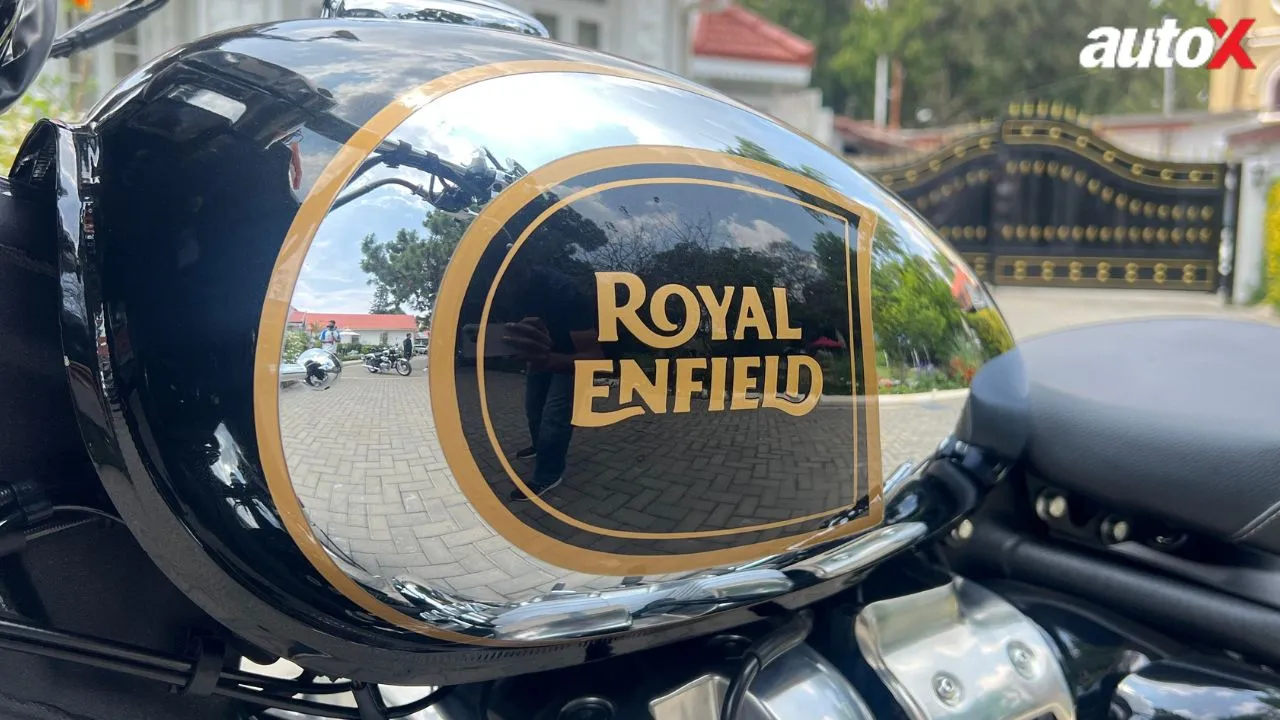
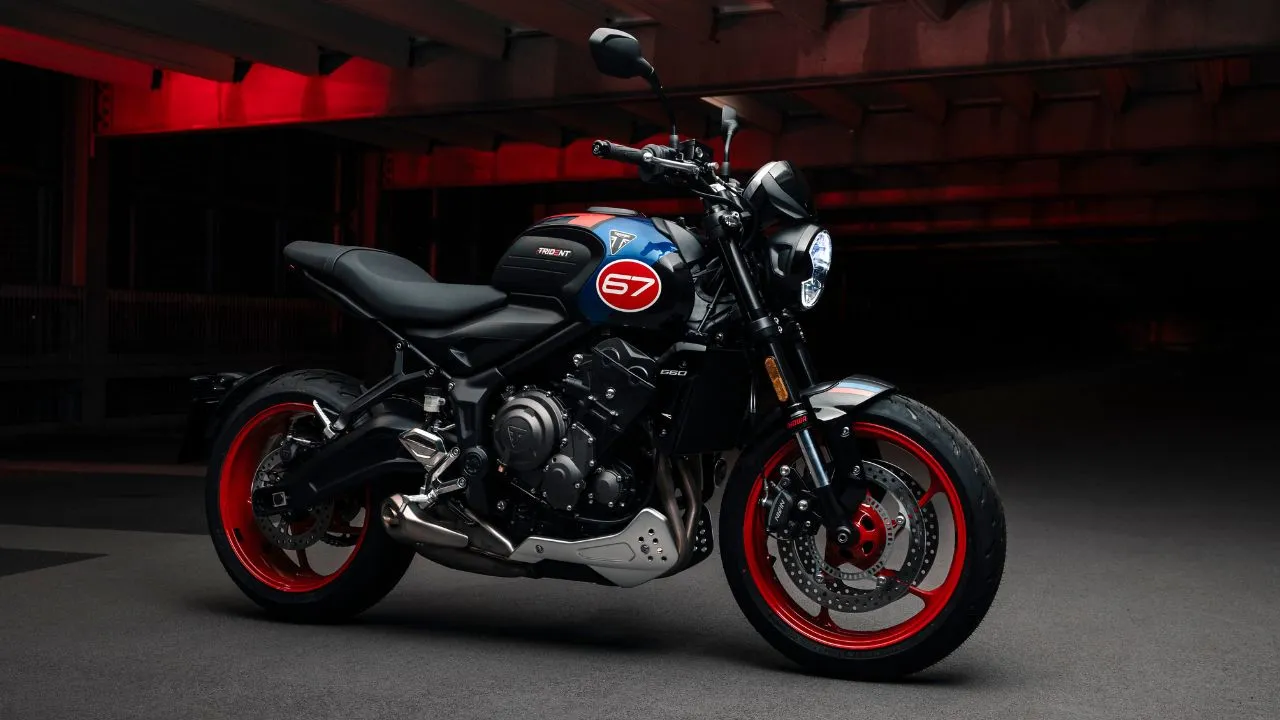
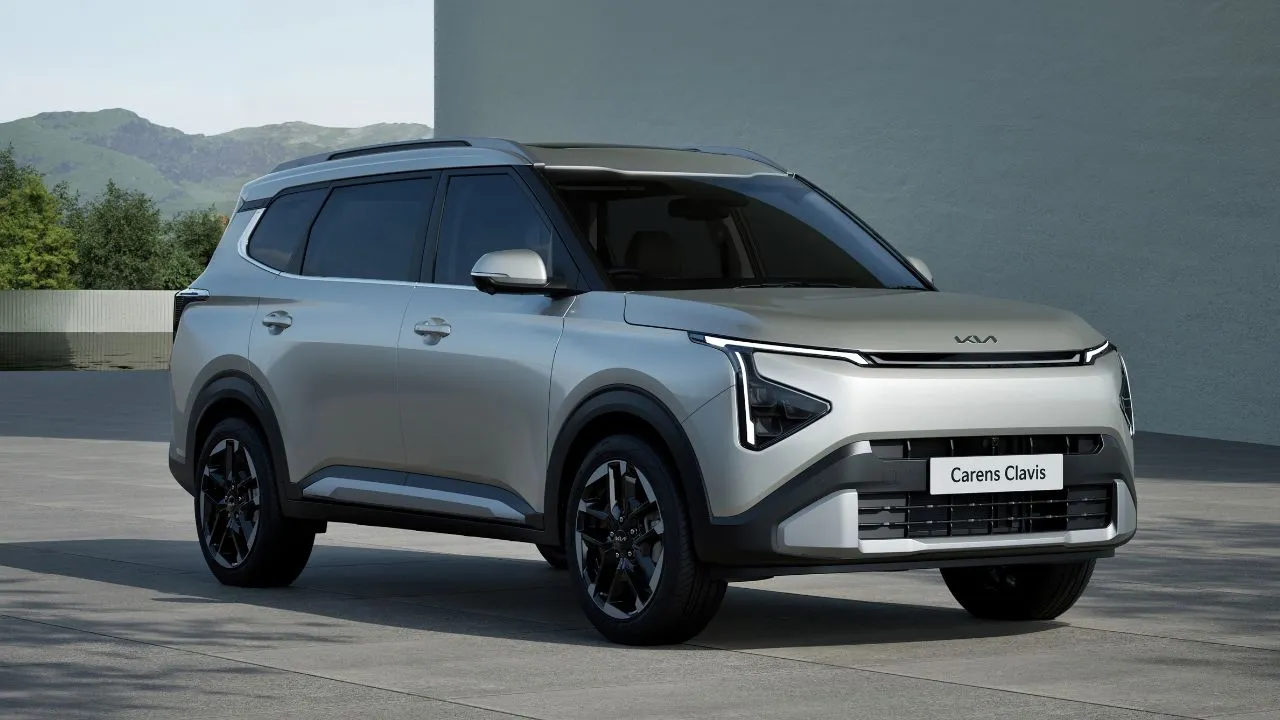
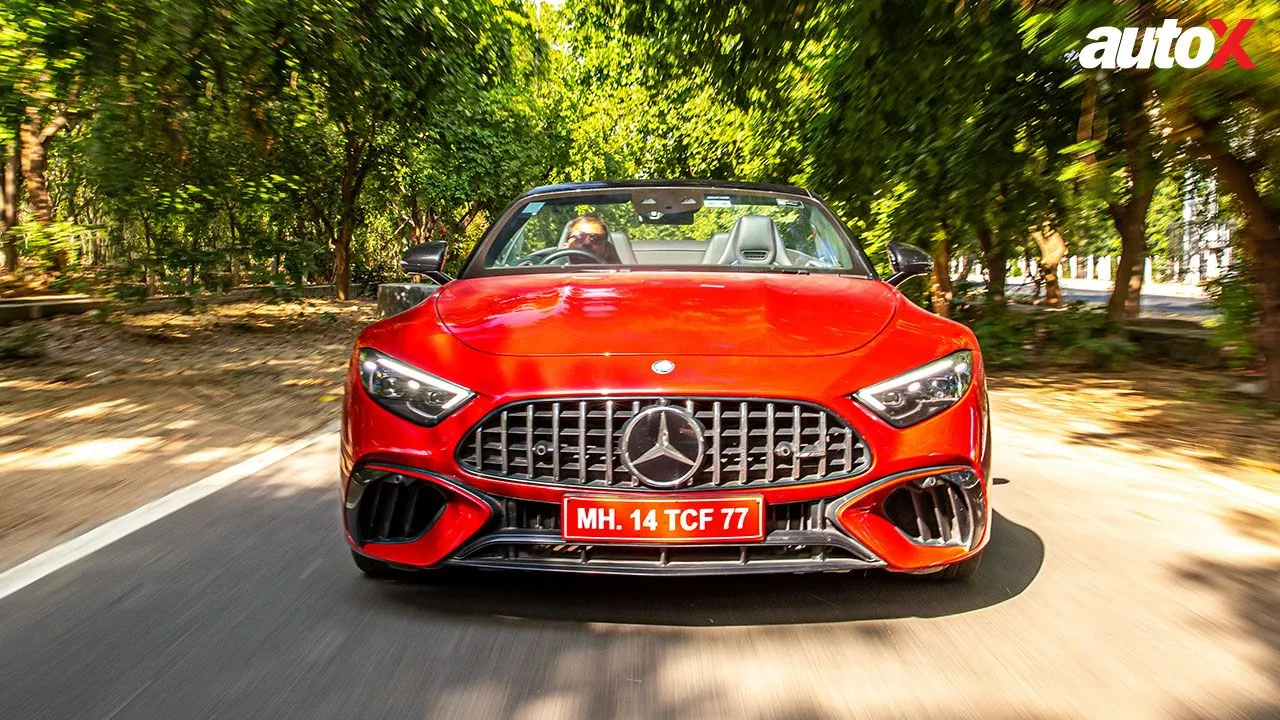

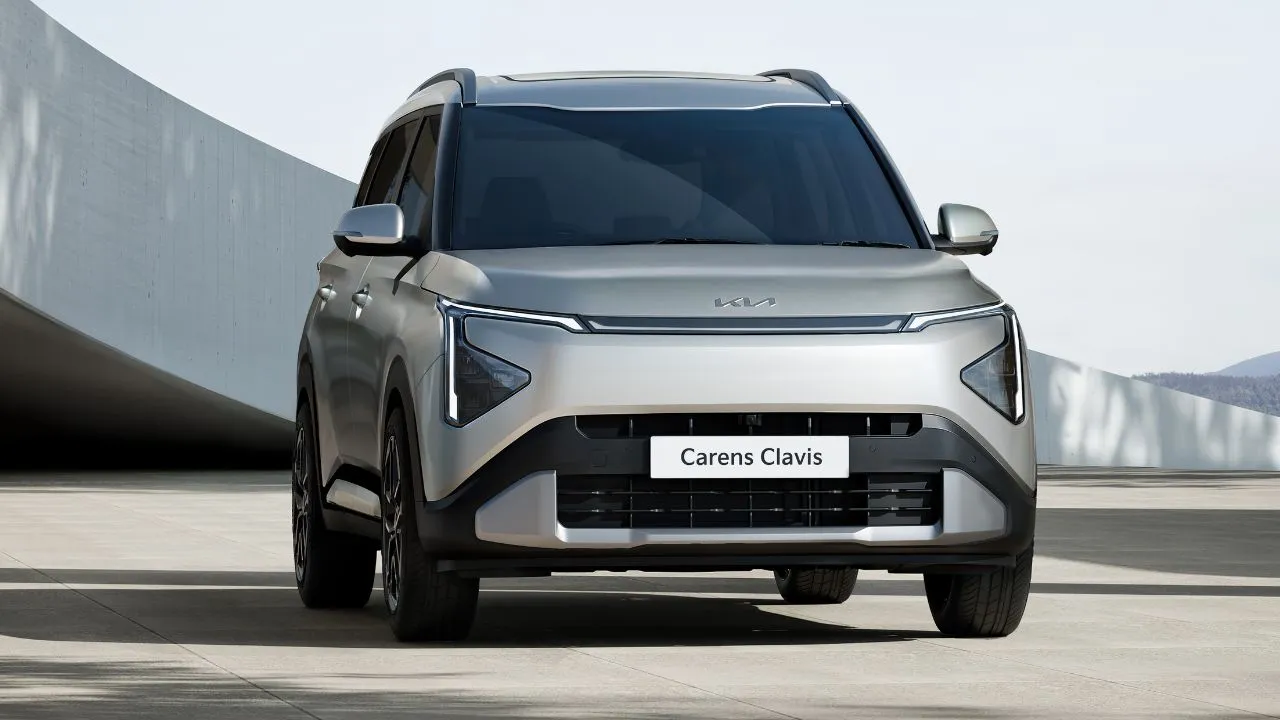
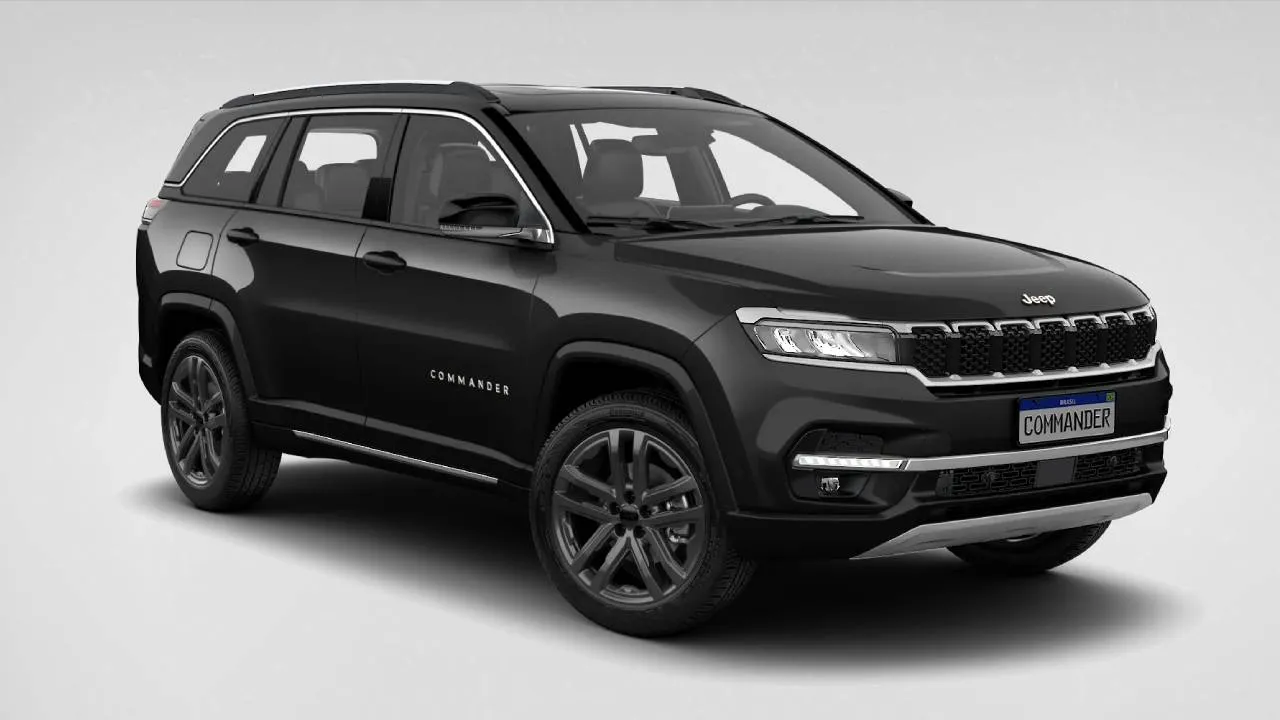

Write your Comment on